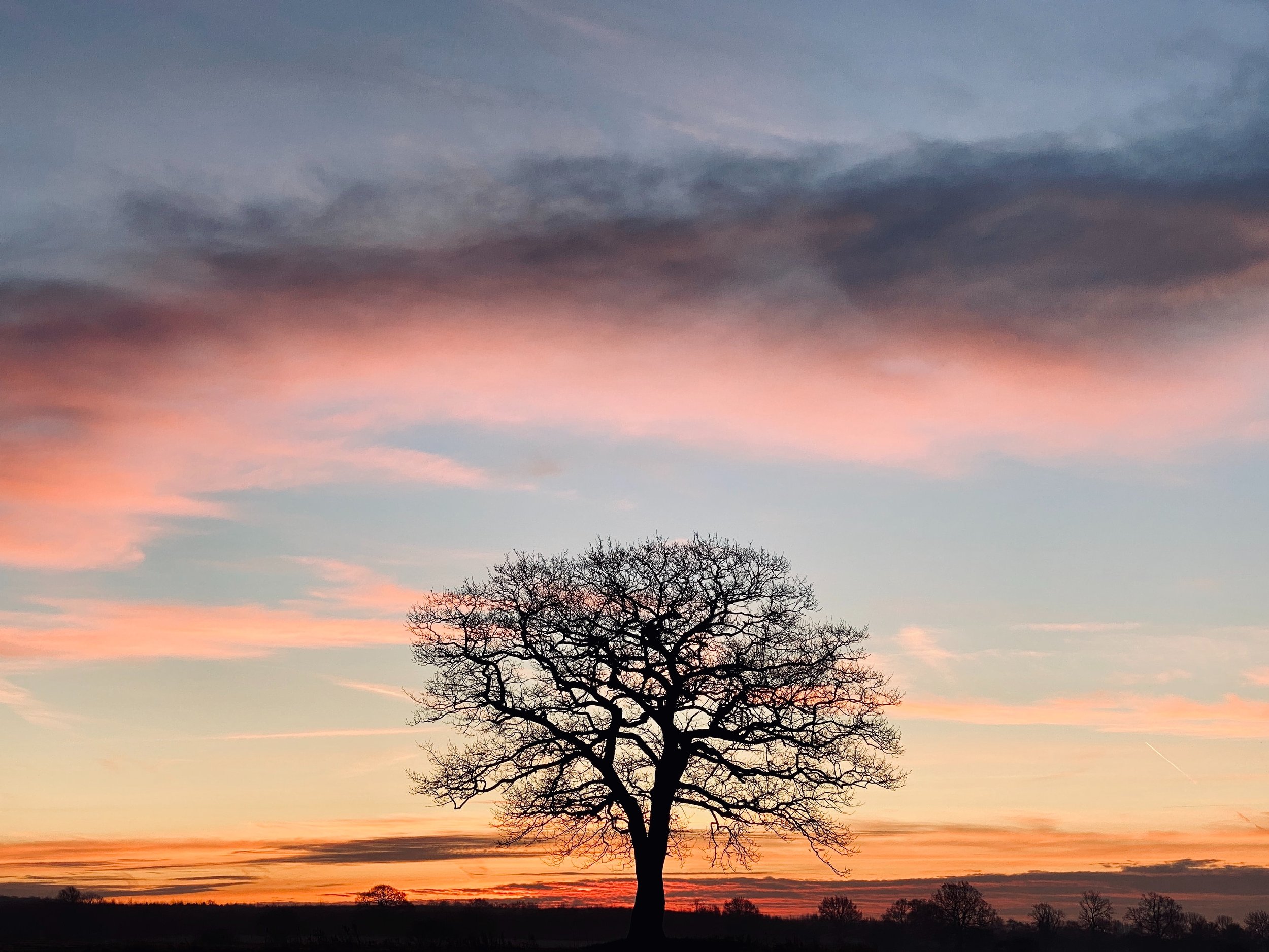The Wych Elm (Ulmus glabra) is considered to be the only true indigenous Elm tree in the UK, and now sadly it is one of our most endangered. These stately, majestic trees were once a common site across the British Isles, but have in recent years been decimated by the Dutch Elm Disease epidemic. Like many of our ancient native trees, Elms have a long relationship with humans and feature in our mythology and history as well as in our industry.
Elms are one of our largest growing trees, reaching heights of up to 30 metres and competing with the Oak for largest native species! When young their bark is smooth and grey, gradually developing fissures and becoming browner as they grow. Elm leaves are serrated and have a notable point to their tip. Their flowers begin to appear in very early spring, even as early as February (hence our choice of Elm for February’s tree!) and look like reddish clusters of fronds, almost like sea anemones. Elm seeds are winged and look a little like flying saucers, with oval “wings” and the seed safely held in the centre.
Since ancient times, Elms have been associated with death; it is relatively common to find Elm trees planted at the door of tombs, where they could serve as guardians and guides to the dead. Due also to their tendency to suddenly and unexpectedly drop their very heavy limbs, sometimes with fatal consequences, superstitions around Elms being a dangerous or difficult tree have also long existed, even giving rise to a once well known saying: Elm is a tree that hateth man, and waiteth. Within the tree surgery world, Elms are certainly considered to pose their own unique challenges when worked on; the wood grows with a very tight, slightly twisted grain which creates enormous potential pressures within a limb. When these are cut there is a possibility of the pressure being suddenly relieved, causing the limb to “pop”, burst or spring in unexpected and difficult to control ways. It takes an experienced and cool hand to deal with this unique and challenging timber!
A section of Elm water piping found in London and dating from the 1700s.
A traditional use for Elm wood has also likely contributed to its association with death. Partly due to its intense durability, Elm was a common choice for coffin wood, as well as being an excellent option for boat building and any wooden item which might have to deal with extreme exposure to the elements. It was even used for water pipes before metal pipes became the norm, with Exeter having Elm pipes first installed at some point in the 1700s. Elm wood was also favoured by the Welsh for their bows, in contrast to the English preference for Yew. When fresh, Elm wood can be formed and bent, hence the name “Wych Elm”, which refers to its pliancy rather than any association with witches - indeed, Elm trees were supposedly good protection against witchcraft!
In the last fifty years, our population of Wych Elms has been decimated by Dutch Elm Disease, a fungal disease which is spread by Elm Bark Beetles. After an infected batch of Elm wood was imported into the UK in the 1960s the disease spread rapidly and tore through our population of Elms, continuing to affect trees even today. Partly due to their preference of growing in stands together, it was very easy for an infected tree to pass on the disease to its neighbour, resulting in massive decline. A number of the trees affected were particularly notable for the cultural significance, including Devon’s own “Dancing Elms”, Elm trees which were used as integral parts of local May Day celebrations. So far, the only accepted way to combat the disease whilst preserving our native Wych Elm stocks is through controlled felling, however it will take considerable time before our Elm populations begin to return to even a quarter of what they once were. These preservation efforts certainly bring a glimmer of hope, though, so whilst our children might not experience Elms as a key part of our landscape, we can hope that our children’s children will.
Lead Image - “The Hay Wain”, John Constable, 1821
Drawing of an Elm Leaf, Buds and Seeds - C. A. M. Lindman, c. 1901-1905
Elm Water Pipe - Science Museum Group
Lone Elm Photo - Ben Hughes, 24/1/2020





